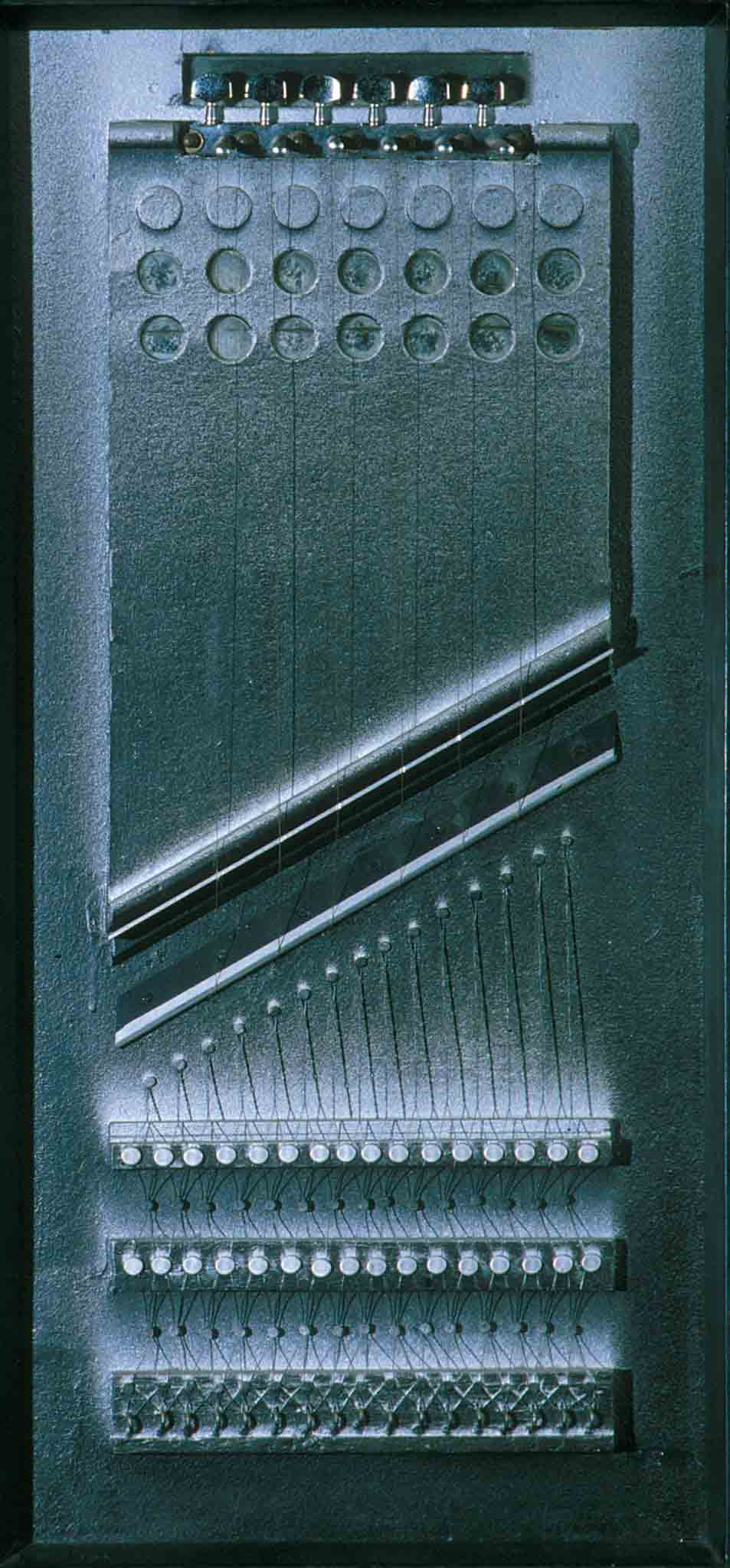Work: Untitled (number 7)
Original sculpture

Original
- Author
- Roberto Papini
- Date
- 1990-2011
- Period
- 20th Century
- Dimensions
- 71 cm high, 31,5 cm wide
- Material
- wood, metal, mirror
- Location
- Si apre in una nuova finestra
Photo: Maurizio Bolognini. Museo Tattile Statale Omero Archive.
Description
“The thing that drove me a little – indeed not a little but a lot – was music. Classical music, seeing the scores written with the notes, the staves, inspired me to make these panels, these signs that encompass this symphony…”, Roberto Papini.
This work by Roberto Papini, an artist from Ancona who died in 2019, is the seventh of these untitled works.
This most interesting picture was made in the 1980s and is conserved at the Museo Omero.
Rectangular in shape, 71cm high and 31.5wide, it features a chromatic interplay of shades of silver, grey and black.
Unlike the others, this work is not only a tactile picture, but is actually a sonic-tactile panel.
Roberto Papini uses recycled materials such as mirrors, metals and wood, but to emphasize the sonic effect, the artist has included parts of a guitar: a wooden sounding board, metal strings and tuning keys.
If you pluck these strings they produce the typical sound of a guitar.
Exploring the work by touch from the top, you first feel 6 tuning keys each of which is attached to a tightly stretched string. Further down, below the diagonal ‘bridge’, other strings are wound around nails, criss-crossed and interlocked as if to imitate a perfect embroidery that contrasts with the linearity perceived so far.
The background to this geometric succession of wire strings is a wooden panel, which is decorated with three rows each with seven circles: in the top row they protrude while in the lower two rows they are concave.
Further down, the feel and appearance of the panel changes. It seems to have been worked with an awl and no longer follows a regular rhythm.
One has the perception of reading a pentagram, where everything is in its place for a very precise reason, just as is required in music.
Papini’s passion for music was equal to his passion for painting and sculpture, so much so that his black and white cat, his faithful domestic companion, was named Caruso.
Papini served in the front line in World War II and among the many lessons he learnt were those of respecting others and not wasting anything, which is why, over time, he selected and kept an enormous variety of items, which most people would have thrown in the dustbin.
